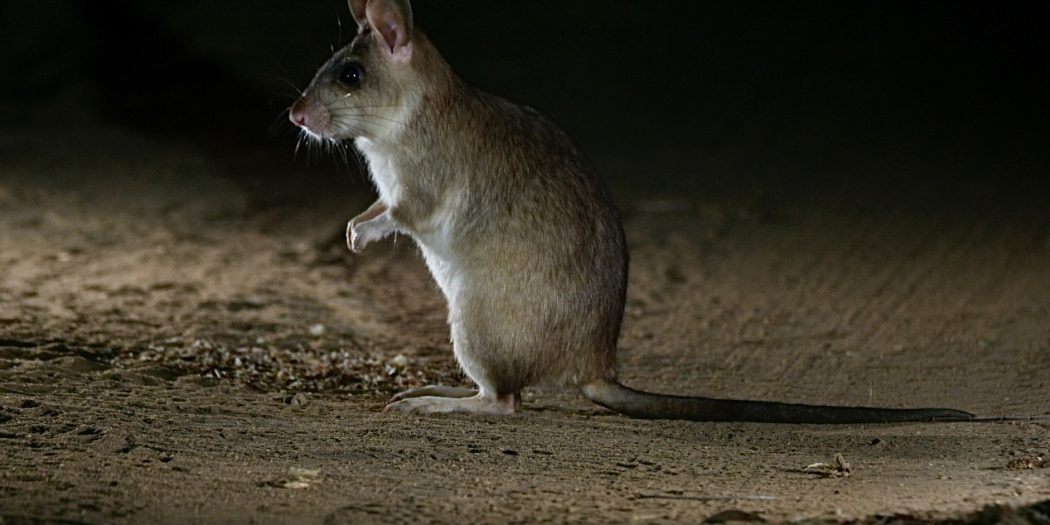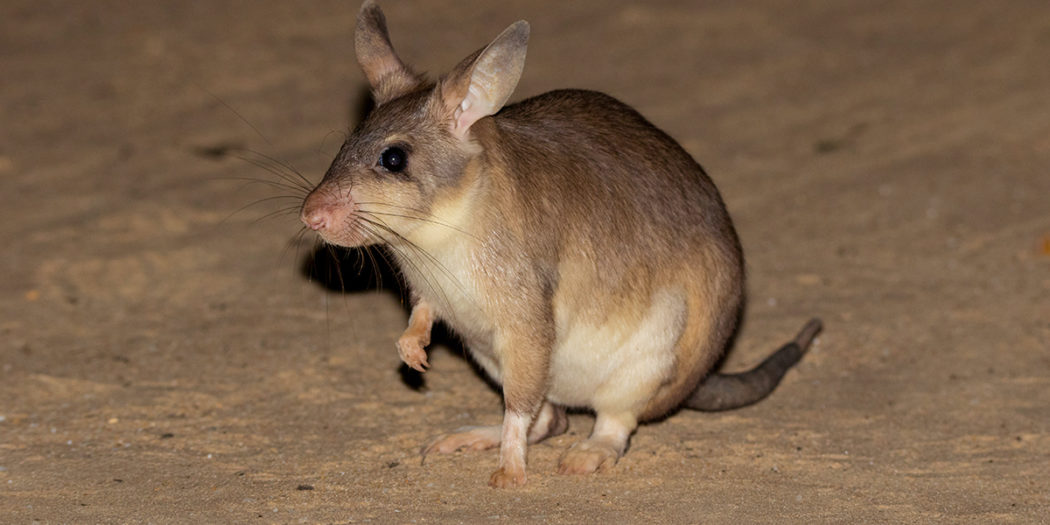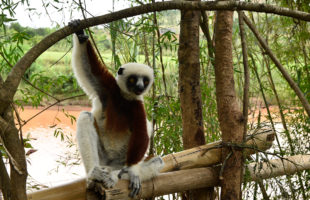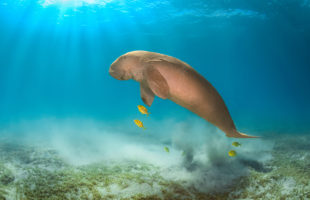A very special inhabitant of Madagascar is the Votsotsa. It looks like a mixture of a rabbit, a kangaroo, and a rat. Big ears, cute black button eyes, a partly jumping locomotion, and a hardly hairy, narrow tail. In fact, the Votsotsa belongs to the Madagascar rats, a separate genus that only lives in Madagascar. It is the largest rodent on the island in the Indian Ocean with a good one-kilo body weight and 30 to 35 cm body length.
Like its optical relatives, the rabbits, the Votsotsa digs burrows to live there during the day. The tunnels of the construction are about five meters long and usually have several exits. This enables the rodents to escape from invading predators such as Dumeril’s Boa. The second major predator of the Votsotsas is the Fossa, which is lurking outside the burrow of the small rodents. All entrances to a burrow are carefully covered by the Votsotsas by piling up branches, earth and plant material.
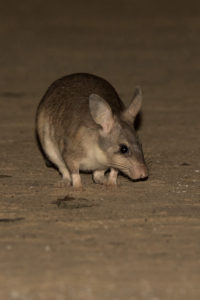
Each burrow is inhabited by only one pair. A pair of Votsotsas that have found each other will stay together for a lifetime. Only when one of the two partners dies, the surviving Votsotsa looks for a new mate. The territory of a couple is about 3500 m². Towards the end of the dry season, mating takes place. After about three months – during the rainy season, usually between December and March – the young animals are born. The Votsotsa female gives birth to only one, rarely two young. The young Votsotsas are nestlings, they are born naked and blind.
The young remain in the burrow of the Votsotsa couple until they are a good month old. During this time they develop their senses and their fur grows. Soon they look like little pictures of their parents. During rearing the father defends his cubs vehemently against intruders. He lures predators away from the home den and attacks animals that come too close to the den. Only in years with particularly lush and long rainy seasons, which are very rare in western Madagascar, the Votsotsas can mate a second time and raise a second litter.
Votsotsas feed mainly on fallen plant parts, which they look for on the forest floor at night. Insects supplement the vegetarian diet with their valuable proteins, especially in the rainy season. During this season Votsotsas also eat a lot of fruits. As soon as it gets drier, they have to switch to meager food: Bark and roots are now part of their diet.
Male Votsotsas only become sexually mature at the age of one year, females even at two years. For a rodent, this is unusually late. With the onset of sexual maturity, the males have to leave their families. For the first time in their lives – and often this is the only time – they leave their family’s territory and look for a lonely female to live in the burrow she has already inhabited. Females stay with the family for an extra year and look after their next siblings before they leave the ancestral burrow.
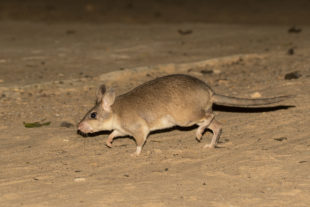
The Votsotsa can only be found by those who travel to the hot and dry west of Madagascar. North of the coastal town of Morondava it lives in the remaining dry forests between the two rivers Tomitsy and Tsiribinha. Unfortunately, a lot of slash-and-burn clearing is still being carried out in the Votsotsa’s distribution area, which causes the original forests to shrink further every year. The Menabe-Antimena area, which owes its scientific name Hypogeomys antimena to the Votsotsa, has already been almost completely cleared. Only a single protected area, Kirindy, remains as a last refuge for the large rodent. The Votsotsa is now threatened with extinction.
An increasing problem for the Votsotsa, besides the dwindling habitat, are stray dogs and cats in Madagascar. Since these pets are not neutered but fed by humans, they reproduce very quickly and hunt the native Malagasy fauna. Votsotsas are also very sensitive to various cat-borne diseases.
How old Votsotsas grow in the wild has not yet been proven. In zoos, they can reach the age of twelve years. At present, a small population of Votsotsas is being established in 15 zoos worldwide to prevent the species from becoming extinct.
 MADAMAGAZINE Your Magazine about Madagascar
MADAMAGAZINE Your Magazine about Madagascar
